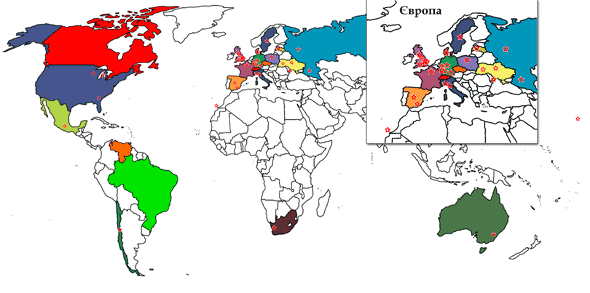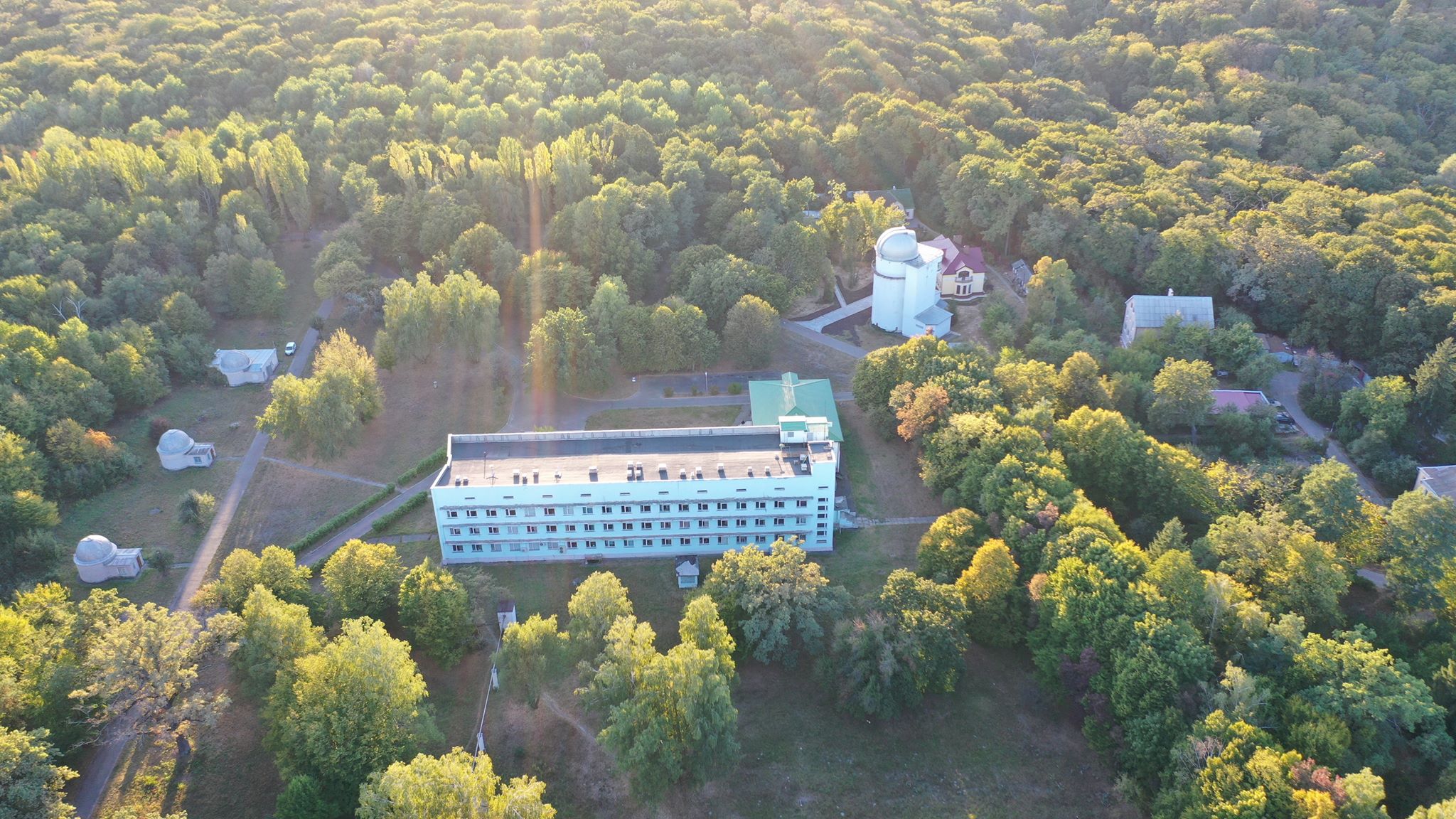The Department for Physics of Stars and Galaxies
 |
Department for Physics of Stars and Galaxies in its present form was established by Dr.Sci., Prof. I.G.Kolesnik in 1983. During the 1994-2000 the Department was headed by Ph.D. S.G.Kravchuk. Since 2000 the Head of the Department is the Academician of NAS of Ukraine, Dr.Sci. Y.I.Izotov.
The Department includes the Laboratory for Physics of Galaxies with Active Star Formation (the Head of the Laboratory is corresponding member of NAS of Ukraine, Dr.Sci. L.S.Pilyuhin).
The Department is consisted of 6 Dr.Sci., including one Academician of NASU and one a corresponding member of NASU, 5 Ph.D.s and 2 persons without scientific degree.
THE DEPARTMENT STAFF:
 |
||
| Berczik Peter — the Head of the Department, Dr.Sci. | Piliugin Leonid — the Head of the Laboratory, Dr.Sci., the corresponding member of NASU | Sobolenko Margarita — Junior Researcher |
 |
 |
 |
| Kharchenko Nina — leading researcher, Dr.Sci. | Zinchenko Ihor — senior researcher, Ph.D. | Nykytiuk Tetiana — researcher, Ph.D. |
 |
_id24_04.jpg) |
|
| Ishchenko Marina - senior researcher, , Ph.D. | Kaminskiy Bohdan — researcher | Vovk (Ahienko) Kateryna — junior researcher, Ph.D. |
MAIN AREAS OF RESEARCH
- Determination of baryonic matter composition in the Universe and deviations of cosmological nucleosynthesis from the standard model predictions.
- Investigations of physical and evolutionary characteristics of galaxies with active star formation. These studies is based on observations carried out on the world's largest telescopes through the wide wavelengths region - X-ray, ultraviolet, visible, infrared and radio.
- Development of methods for physical and chemical composition of extra-galactic HII regions determination.
- The chemical evolution of galaxies investigations.
- Determination of kinematic and physical characteristics of the Galaxy clusters.
- Stellar spectra analysis accounting deviations from LTE. Late type stars evolutionary and physical parameters determination .
MAIN SCIENTIFIC ACHIEVEMENTS
Galaxies with the active star formation
- Primary helium abundance was determined based on spectral observations of a large sample of dwarf galaxies. It was shown that in the primordial nucleosynthesis epoch the effective number of neutrino types was Neff=3.5±0.3, which is greater than the Standard Model value - Neff=3.046.
- The sample of 15,000 galaxies with active star formation was compiled from the Sloan Digital Sky Survey (SDSS) database for the purposes of physical and evolution state of galaxies studies.
- A systematic search for galaxies with extremely low abundances of heavy elements was carried out using the SDSS database and own observations. Our researches discovered 12 galaxies with oxygen abundance of 12+logO/H < 7.35, which represents over 70% of these galaxies discovered for today.
- Emission of highly ionized forbidden [Ne V] 342.6 nm lines was detected in spectra of blue compact dwarf galaxies. This radiation is the result of shock waves with velocity of 500 km/s. Only eight galaxies of this type are discovered in the world, all of them - by the researches of the Department.
- Five dwarf galaxies with broad emission hydrogen Hα lines were discovered. These low metallicity galaxies have active cores with black holes. These are the first examples of galaxies with black holes of intermediate masses.
- Two blue compact dwarf galaxies with extremely low abundance of heavy elements are investigated for temporal changes of broad emission hydrogen lines Hβ and HαHα in brightness and magnitude. These lines are formed in intensive stellar wind from bright blue variable stars, its velocity is over 1000 km/s. Such stars are the brightest stars in galaxies. The stars with solar metallicity are well known in Galaxy (e.g., η Car and P Cyg), while the bright blue variable stars with low metallicity are investigated for the first time.
- The magnesium abundance determination in 65 blue compact galaxies with low abundance of heavy elements were carried out for the first time in the world. It was proved that magnesium is reasonably depleted in a gaseous environment of these galaxiesbecause of its partial falling into dust particles.
- The nature of sub-millimeter emission excess was investigated based on the study of energy distribution in spectra of dwarf galaxies with emission lines in the wavelength range from ultraviolet to radio. This excess is proved to be corresponded to free-free emission of ionized gas.
- Several versions of the strong lines method for electron temperature and chemical composition determinations of extra-galactic HII regions are developed. The accuracy of chemical abundances determination while using the strong lines method corresponds to the classical methods. The using of strong lines which are visible in the majority of extra-galactic HII regions is the advantage of the proposed method.
- Observable chemical evolution (evolution stage depended on redshift) of spiral and irregular galaxies was investigated. It was found that the oxygen and nitrogen enrichment of massive galaxies and, therefore, active star formation occurred in the past. Such processes in low-mass galaxies are taken place at present time.
Stars
- Original research on visual and infrared spectra modeling of brown dwarfs and other low-mass objects was carried out. Spectra of these objects are formed in conditions of extremely low temperatures and radiation absorption by polyatomic molecules and dust particles. The "lithium test" technique allow to distinguish young brown dwarfs among the set of low-mass stars. A new method called "deuterium test" can help to separate population of planetary mass objects from more massive ultracool dwarfs.
- The method of chemical abundance determination of stars on late evolutionary stages was developed. It will help to carry out the atomic and molecular spectra quantitative analysis of such stars to clarify their evolutionary status. The investigations of stars with short evolutionary periods, such as Sakurai's object and V838 Mon, are well known in the world.
- The original investigations of stars with peculiar chemical abundance are carried out at present time. Stars with carbon enrichment, hydrogen depletion and binary red giants with Nova phenomenon are studied under this research.
Star clusters of the Galaxy
- In the frame of the MWSC (Milky Way Star Clusters) project, based on 2MASS which includs nearly 500 million stars with visible limit Ks = 15.3, more than 4000 cluster-like Galaxy objects were analyzed. It was shown that most of them are clusters. For 3206 clusters were determined such parameters: cluster's membership probability, the center coordinates, angular size, proper motions, distance, color excess, age, tidal parameters, radial velocity. For the half of the considered clusters these parameters were defined for the first time. Full sample cover the area of 2kps and includes Perseus and Sagittarius-Carina spiral arms. Distances in the sample range from the central Galactic clusters to the edge ones. The clusters' ages are 1-12.6 billion years and this is the time of the Milky Way's existence.
COLLABORATION
Observations
Observations are carried out using the best world's facilities, among them are:
- in X-rays - space telescopes Chandra and XMM-Newton;
- in the ultraviolet - space telescopes Hubble and FUSE;
- in the visible region - ground-based 10-m Keck (USA), 2 x 8.4-m LBT (USA), 8.0-m Gemini (USA), 6.5-m MMT (USA), 4th KPNO (USA), 3.5-m APO (USA), 8.2-m VLT (ESO), 3.5-m NTT (Chile);
- in the infrared - the Spitzer and Herschel space telescopes, ground-based telescopes: 3.5-m APO (USA), 3.8-m UKIRT (Great Britain) and 8.0-m Gemini (USA);
- in the radio region - ground-based GBT (USA) and VLA (USA).
 |
| International scientific collaboration and the geography of the scientific cooperation of the department for physics of stars and galaxies. |



 COORDINATES
COORDINATES